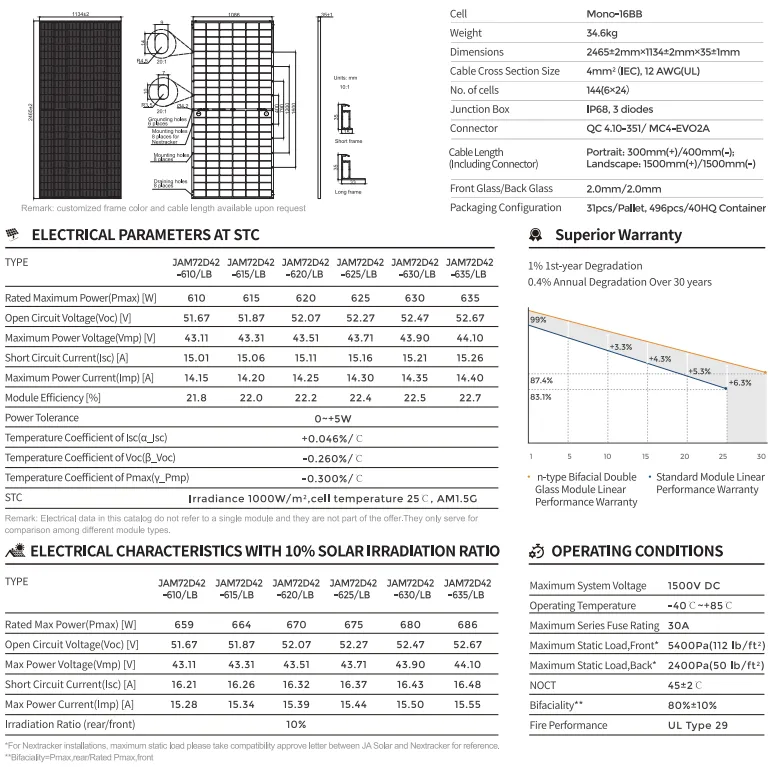Understanding the Functionality and Operation of Solar Hybrid Inverters in Renewable Energy Systems
Understanding the Working Principle of Solar Hybrid Inverters
As the world moves towards sustainable energy solutions, solar power has emerged as a leading contender. Essential to utilizing solar energy effectively is the solar hybrid inverter, a device that plays a critical role in managing solar energy production, storage, and consumption. This article delves into the working principle of solar hybrid inverters and their significance in modern energy systems.
A solar hybrid inverter is designed to work with both solar panels and traditional grid power or diesel generators
. Essentially, it serves three main functions it converts DC (direct current) electricity from solar panels into AC (alternating current) electricity needed for everyday use, charges batteries, and manages power distribution between solar generation, battery storage, and grid input.The working principle begins with the solar panels absorbing sunlight, converting it into DC electricity through the photovoltaic effect. This direct current is usually not suitable for home appliances, which predominantly operate on AC electricity. Here is where the inverter comes in. The inverter first converts the generated DC electricity into usable AC power.
In a typical operational scenario, when solar panels produce more electricity than the household needs, the excess energy can either be fed back into the grid or stored in batteries for later use. The hybrid inverter smartly manages this energy flow. If battery storage is available, the inverter directs the extra solar energy to charge the batteries. Conversely, during nighttime or cloudy days when solar generation is insufficient, the inverter seamlessly switches to battery power or uses grid electricity.
solar hybrid inverter working principle

A crucial aspect of hybrid inverters is their emphasis on energy efficiency and smart management. Many of these inverters come equipped with advanced technology and software algorithms that optimize energy usage. They continuously monitor the power generation and consumption patterns, ensuring that the household, grid, and battery systems are balanced effectively. This feature allows consumers to maximize their reliance on solar energy, reducing their electricity bills and carbon footprint.
Moreover, hybrid inverters also enhance energy resilience. In the event of a power outage, these inverters can often maintain the supply if batteries are charged, allowing essential appliances to continue functioning. This capability has made them particularly appealing for off-grid living and areas prone to frequent power disruptions.
The adaptability of solar hybrid inverters extends to their compatibility with various renewable energy sources. In many setups, homeowners can integrate wind turbines alongside solar panels and utilize a hybrid inverter to manage multiple energy inputs. This flexibility makes hybrid inverters an attractive solution for energy diversification and sustainability.
In conclusion, solar hybrid inverters are pivotal in modern renewable energy systems. By efficiently converting and managing energy from solar panels, batteries, and the grid, they provide a reliable, flexible, and cost-effective solution to energy generation and consumption. Their ability to enhance energy independence, optimize efficiency, and offer resilience against outages underscores their importance in the shift towards sustainable energy practices. As technology continues to advance, hybrid inverters will undoubtedly play a crucial role in shaping the future of energy consumption, contributing significantly to a greener planet.
-
Unlocking Energy Freedom with the Off Grid Solar InverterNewsJun.06,2025
-
Unlock More Solar Power with a High-Efficiency Bifacial Solar PanelNewsJun.06,2025
-
Power Your Future with High-Efficiency Monocrystalline Solar PanelsNewsJun.06,2025
-
Next-Gen Solar Power Starts with Micro Solar InvertersNewsJun.06,2025
-
Harnessing Peak Efficiency with the On Grid Solar InverterNewsJun.06,2025
-
Discover Unmatched Efficiency with the Latest String Solar InverterNewsJun.06,2025







